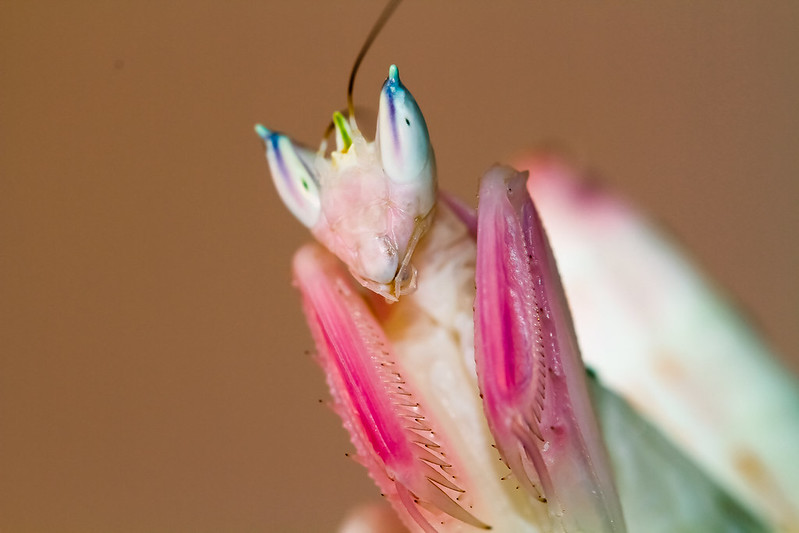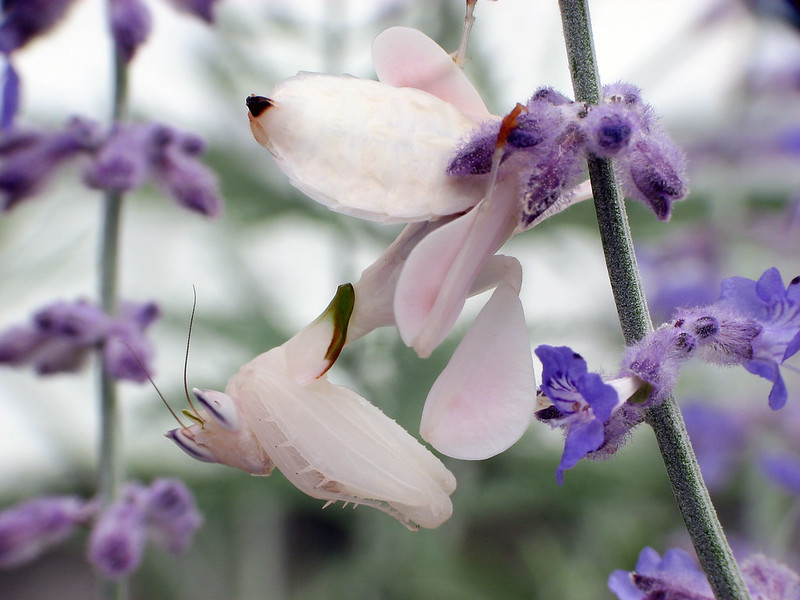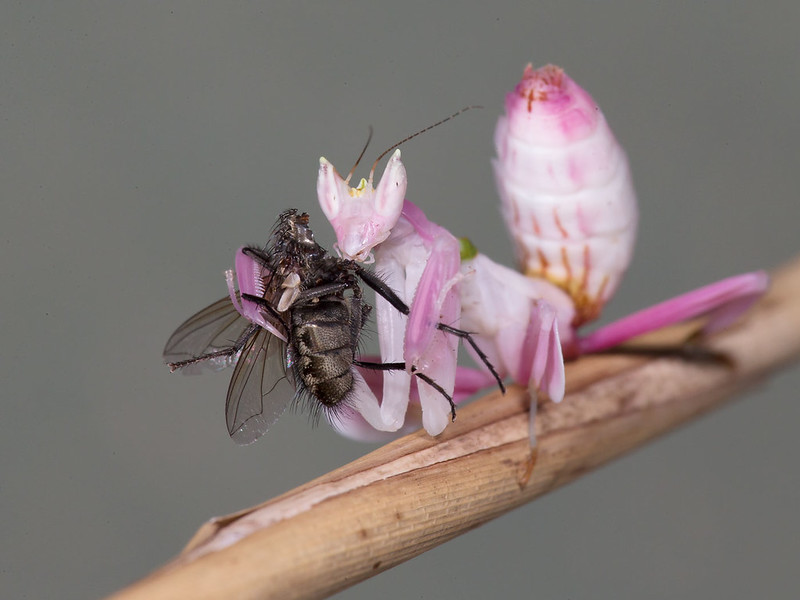Don’t be fooled by its delicate beauty. When it comes to hunting, the Orchid Mantis (Hymenopus coronatus) is nature’s most elegant assassin. With a body that perfectly mimics a blooming orchid, this mesmerizing insect lures in unsuspecting prey using camouflage so convincing it borders on illusion. But behind the floral disguise lies a predator armed with lightning-fast reflexes and a taste for flesh. What exactly does the Orchid Mantis eat? And how does it turn beauty into a deadly ambush strategy? Let’s uncover the secrets of this flower-shaped killer.
The Orchid Mantis

The Orchid Mantis (Hymenopus coronatus), also called the flower mantis, is a carnivorous insect native to Southeast Asia, including Malaysia, Indonesia, and Thailand. It is famous for its incredible mimicry, resembling a blooming orchid with pink and white coloring, petal-shaped legs, and a swaying movement that looks like a flower in the wind.
This illusion helps the mantis hide in plain sight and attract prey such as bees and butterflies. Once the prey is close enough, it strikes with lightning speed using its sharp front legs. The Orchid Mantis is not just beautiful but a highly skilled ambush predator.
Females are much larger and more colorful than males. With large eyes and a triangular head, it has excellent vision for detecting movement. The Orchid Mantis is a rare example of nature using beauty as a deadly tool, making it a favorite among insect lovers and wildlife photographers.
How the Orchid Mantis Uses Beauty and Deception To Hunt
The Orchid Mantis (Hymenopus coronatus) is a master of deception and precision, relying on a combination of ambush predation and aggressive mimicry to hunt its prey. Rather than chasing down its food, this carnivorous insect employs a highly effective sit and wait strategy. Perched motionless among tropical flowers, the mantis poses as a blossom itself, conserving energy while waiting for unsuspecting insects such as bees, butterflies, and flies to draw near.

What sets the Orchid Mantis apart from other predators is its use of aggressive mimicry. Its petal-like limbs, vibrant coloration, and gentle swaying movements closely resemble an orchid flower. In juveniles, this illusion is enhanced by chemical cues that mimic the scent of real blooms, making them especially effective at attracting pollinators. Research has shown that these mantises can sometimes lure more insects than actual flowers.
When prey ventures too close, the mantis launches a trap-like attack with lightning speed. Using its sharp, toothed raptorial forelegs, it snatches and secures its victim in a split second. This blend of camouflage, mimicry, and rapid strikes makes the Orchid Mantis one of the most visually deceptive and efficient insect predators in the natural world.
What Is On Orchid Mantis’s Menu
Its primary prey includes a wide range of flying insects, including hoverflies, beetles, and small wasps. In some cases, the Orchid Mantis will even turn to cannibalism, consuming smaller mantises when food is scarce.

Their diet also evolves dramatically as it grows. Juvenile mantises are small and delicate so they feed on tiny pollinators like gnats and fruit flies, using their miniature orchid mimicry to lure them in. As they mature, their size, strength, and striking range increase— allowing adult Orchid Mantises to capture larger prey such as bees, moths, flies, and butterflies. This adaptive hunting strategy makes them efficient predators at every life stage.
FAQ: The Orchid Mantis Hunting Style and Prey
What does an Orchid Mantis eat ?
Primarily flies, bees, butterflies, and moths. Occasionally, they also eat beetles, spiders, and even smaller mantises when food is limited.
How does it catch prey so effectively ?
It uses camouflage, swaying mimicry, and ambush tactics—striking with sharp, lightning-fast raptorial legs when prey comes too close.
Can they change color to match different flowers ?
Yes, they can shift between pink, white, and brown shades over time to better blend into their floral surroundings.
Do nymphs and adults hunt differently ?
Nymphs attract tiny pollinators using chemical cues. Adults hunt larger insects but use the same ambush and mimicry tactics.
Nature’s Floral Silent Waiting Assassin
From its hypnotic mimicry to its lightning-fast strikes, the Orchid Mantis is more than just a pretty predator—it’s a living example of nature’s most brilliant deceptions. With every ambush and every swaying motion, it reveals just how far evolution will go to blend beauty with brutality. As both predator and illusionist, this remarkable insect offers a rare glimpse into the hidden strategies of survival that unfold right under our noses.
Love learning about the wild and weird corners of the insect world? Stick around, explore more of our articles, and discover the untold stories of nature’s tiniest hunters. There’s always another surprise waiting behind the next leaf.
